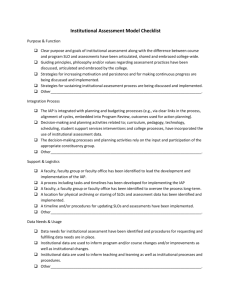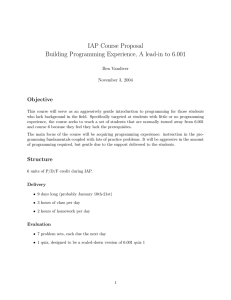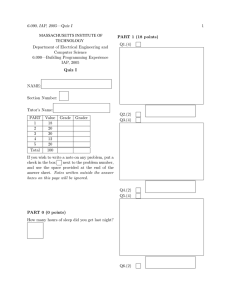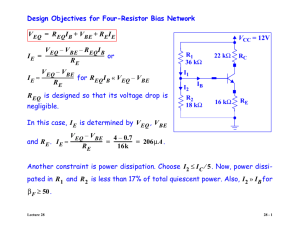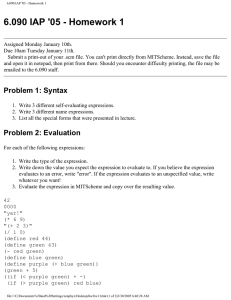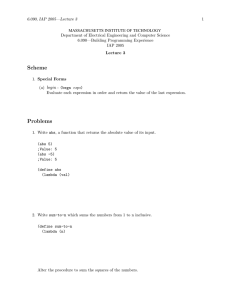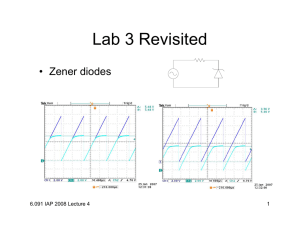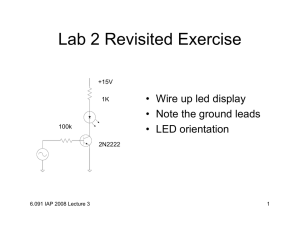Document 13513627
advertisement
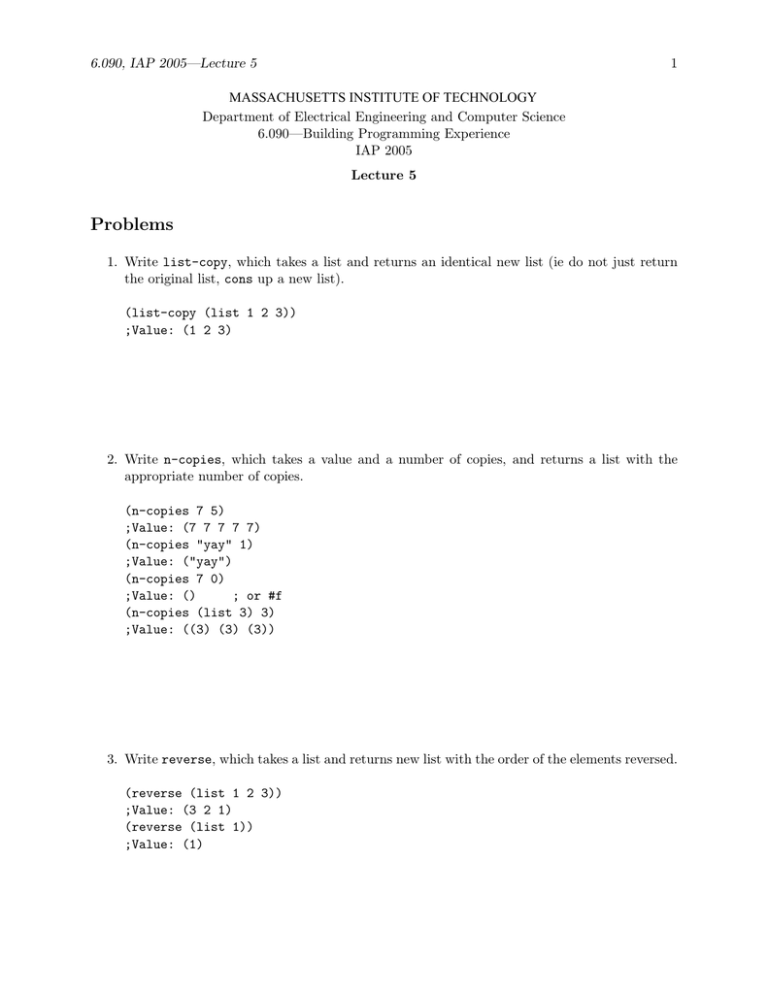
6.090, IAP 2005—Lecture 5 1 MASSACHUSETTS INSTITUTE OF TECHNOLOGY Department of Electrical Engineering and Computer Science 6.090—Building Programming Experience IAP 2005 Lecture 5 Problems 1. Write list­copy, which takes a list and returns an identical new list (ie do not just return the original list, cons up a new list). (list­copy (list 1 2 3)) ;Value: (1 2 3) 2. Write n­copies, which takes a value and a number of copies, and returns a list with the appropriate number of copies. (n­copies 7 5) ;Value: (7 7 7 7 7) (n­copies "yay" 1) ;Value: ("yay") (n­copies 7 0) ;Value: () ; or #f (n­copies (list 3) 3) ;Value: ((3) (3) (3)) 3. Write reverse, which takes a list and returns new list with the order of the elements reversed. (reverse (list 1 2 3)) ;Value: (3 2 1) (reverse (list 1)) ;Value: (1) 6.090, IAP 2005—Lecture 5 2 4. Write append, which takes two lists and returns a new list with the elements of the first list and the second list. (append ;Value: (append ;Value: (list 3 4) (list 1 2)) (3 4 1 2) nil (list 1 2)) (1 2) 5. Write list­ref, which takes a list and an index (starting at 0), and returns the nth element of the list. You may assume that the index is less than the length of the list. (list­ref (list 17 42 35 "hike") 0) ;Value: 17 (list­ref (list 17 42 35 "hike") 1) ;Value: 35 (list­ref (list 17 42 35 "hike") 2) ;Value: 35 6. Write list­range, which takes two numbers (a,b : a ¡ b) and returns a list containing the numbers from a to b, inclusive. (list­range 1 5) ;Value: (1 2 3 4 5) (list­range 2 5) ;Value: (2 3 4 5) (list­range 42 42) ;Value: (42) (list­range 207 5) ;Value: () 6.090, IAP 2005—Lecture 5 3 7. Write max­list, which takes in a list of numbers and returns the maximum element. You may assume that the list is non­empty. (Hint: different base case than normal!) (max­list (list 1)) ;Value: 1 (max­list (list 1 3 5)) ;Value: 5 (max­list (list 2 56 8 43 21)) ;Value: 56 Data Abstraction 1. Derived Type ­ A user­designated and implemented type. 2. Constructor ­ Builds entity of the type 3. Selector ­ Returns one of the values of the type 4. Contract ­ Specifies the relationship between the constructor(s) and the selector(s). (define (make­point x y) (define (get­x point) (define (get­y point) 8. Write add­points which takes two points and returns a new point which is the sum of the x and y coordinates. (define result (add­points (make­point 3 4) (make­point 1 2))) (get­x result) ;Value: 4 (get­y result) ;Value: 6 6.090, IAP 2005—Lecture 5 4 9. Write left­of? which takes two points and returns true if the first point is to the left of the second point. (left­of? (make­point 3 4) (make­point 1 2)) ;Value: #f (left­of? (make­point ­3 4 (make­point 1 2))) ;Value: #t Stacking Abstractions: Segments 10. Implement an abstraction for line­segments, which are defined by a pair of end­points. 11. Write segment­length, which takes a segment and returns it’s length.

